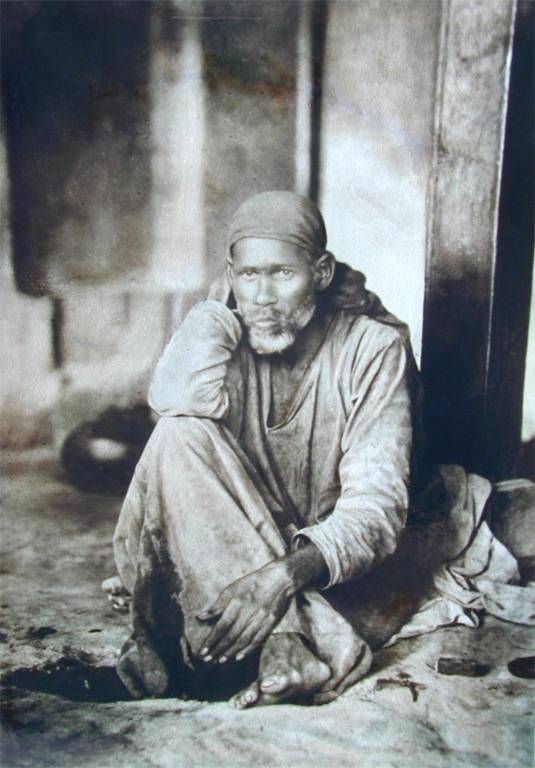Shirdi Sai Baba
- Posted on
- By missus abracadabra
- Posted in bhakti, Dwarakamai, Fakir, Hindu saint, kabir, saint, sant, shirdi Sai baba
- 0

Shirdi Sai baba is a re-incarnation of Kabir was a Hindu muslim propagator of Bhakti. lived in a mosque which he called Dwarakamai, preached unity of all religions. Important modern day Hindu Saint
Shirdi baba
Shirdi Sai baba spent most of his life in Shirdi a small nondescript village in Maharashtra in west central India. These days you could hardly call it that, on any one day at least 20,000 people visit his temple, on festival days the numbers can be a fivefold of that.
Shirdi Sai Baba arrived silently in the village, as a youth of about sixteen, with long flowing hair and the air of an ascetic. He move in under a neem tree where he sat to meditate for long periods. He often went into the jungle for long periods, and when he needed food he begged for it. He choose not to tell his name or where he hailed from, finding it unimportant.
Eventually the villagers helped him move into a deserted and dilapidated mosque which he called Dwarakamai (mother of Dwaraka-the city that Krishna built)
He is famed for his Muslim / Hindu sayings, things like “Rama is Allah”, but in India the melting of Islam into Hinduism and visa versa , is not so uncommon and is firmly rooted in the Soefi tradition.
Shirdi Sai Baba always said he was “only” a fakir, but then, later in life he proclaimed he was the re-incarnation of Kabir (who was one of the foremost Sant mystics). There are many similarities between Kabir and Shirdi Sai Baba- they both attracted Muslim, and Hindu devotees. They both practiced Bhakti( they were “merely” the servants or slaves of God- which eventually leads to merger with the Godhead)
He also said that he Dattatrya was, and on various occasions showed himself to devotees in various forms of God.
Today he is one of the most popular India saints /Gods –depending on your point of view.
There are some indications that he met with many saints and fakirs, Sai Baba referred to several saints as 'my brothers', especially the disciples of Swami Samartha of Akkalkot( also a follower of Dattatreya).
At some point he left the village of Shirdi, and was absent for about three years, returning in 1858. He then remaining there until his Samadhi in 1918. He did tell about this period :- he was in Jhansi during the Great indian Rebellion (1857) to help Rani Laxmibai.
Sai baba tells us to read the Holy books (all- both Hindu and Muslim) and to do Japa ( repetition of the chosen name of God). He tells us not to discriminate on grounds of religion or caste, and to dismiss all orthodox religion and dogmas.
Baba was passionate about qawwali especially when accompanied by tabla and sarangi which he liked to listen to every day.
His miracles happen every day still, here is an example:
A Sri Lankan Christian Developer in New Zealand was developing a new Subdivision, in his 10 acres of land.
While digging the field, a Digger found a solid object, about 6 to 7 feet under the ground. ……He stopped digging immediately and lifted this object out of the ground. This happened on 15 April 2010, in Wellington's Lower Hutt Suburb, Wainuiomata in New Zealand,
The Developer, on seeing that this solid object was the Statue of some Deity, halted further digging and got the Statue cleaned. He then called a Hindu Priest to identify the Deity, as he himself was not sure about it . The Statue, about 2 feet tall, happened to be of Shirdi Sai Baba in a sitting posture. Soon, water started coming out from the place where the digger had found Baba's Statue and slowly it turned into a small pond. Hence, Baba's Statue was put on a small wooden pallet and now rests floating in the pond, at the same place…
Draw your own conclusions about this veritable Indian saint. I will rest my case at His Beautiful Lotus Feet.

dank u wel. ik ga hopelijk in de volgend jaar vehuizen naar de achterhoek. Dan kan ik soms naar de mandir komen